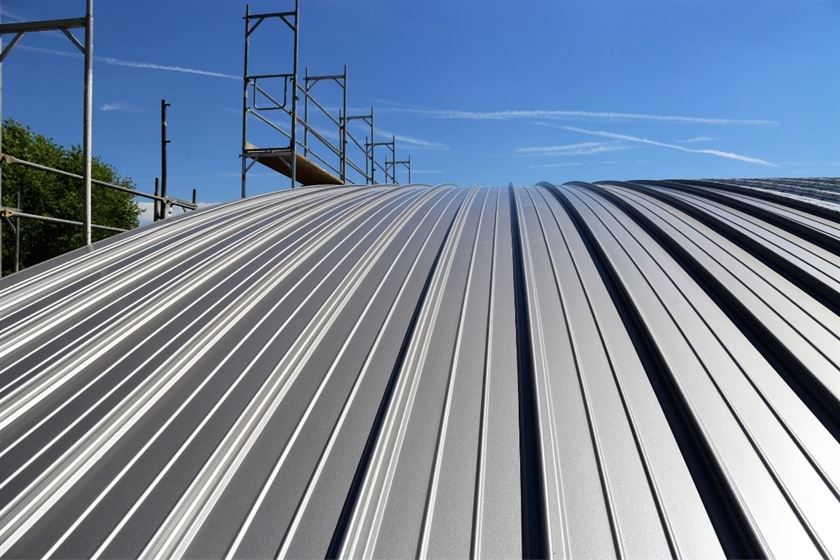Metal Roofing for Commercial Buildings: Comprehensive Analysis
Metal Roofing for Commercial Buildings: Comprehensive Analysis
Metal roofing has become a widely favored option for commercial structures due to its exceptional durability, longevity, aesthetic appeal, and energy efficiency. It is particularly suited to commercial settings because of its ability to withstand harsh weather conditions, provide superior structural protection, and maintain lower long-term maintenance costs.
Types of Metal Roofing SystemsStanding Seam Metal Roofing
Standing seam roofing is characterized by raised seams that interlock, providing robust structural integrity and impressive weather resistance.
Composition and Design: Constructed from metal panels typically made of aluminum, steel, or copper, joined by raised seams that run vertically.
Benefits:
Superior Weather Resistance: Exceptional resistance to water, wind, snow, and UV damage.
Energy Efficiency: Reflective coatings reduce heat absorption, significantly lowering cooling costs.
Long Lifespan: Typically lasts 40 to 70 years with minimal maintenance.
Enhanced Aesthetics: Offers a clean, modern look, suitable for architectural styles of various commercial buildings.
Installation:
Panels are mechanically fastened or clipped onto the roof decking.
Seams are sealed mechanically or by snap-lock, providing excellent waterproofing and wind resistance.
Corrugated Metal Roofing
Corrugated metal roofing is widely used in industrial and commercial settings due to its affordability, strength, and ease of installation.
Composition and Design: Consists of metal sheets with a wave-like pattern to enhance structural integrity and channel water efficiently.
Benefits:
Cost-Effectiveness: Lower initial costs compared to other metal roofing options.
Strength and Durability: Highly resistant to impact, corrosion, and extreme weather conditions.
Easy Installation: Quick to install, reducing labor costs and downtime.
Installation:
Typically fastened with screws directly into the roof decking.
Requires fewer tools and less specialized labor compared to standing seam.
Advantages of Metal Roofing
Metal roofing offers numerous advantages that make it highly attractive for commercial buildings:
Exceptional Durability: Resilient to cracking, shrinking, erosion, and can withstand extreme weather events such as hail, heavy snow, and high winds.
Long Lifespan: Metal roofs can last significantly longer than traditional roofing materials, often exceeding 50 years.
Low Maintenance: Requires minimal ongoing maintenance, leading to lower lifecycle costs.
Energy Efficiency: Reflective coatings reduce solar heat gain, lowering building cooling costs significantly.
Environmentally Friendly: Often manufactured with recycled materials and fully recyclable at the end of their life cycle.
Potential Challenges of Metal Roofing
While metal roofing is highly beneficial, certain factors need consideration:
Higher Initial Cost: Although cost-effective in the long run, the initial installation cost can be higher compared to other roofing systems.
Noise Consideration: Without proper insulation, metal roofs may generate more noise during heavy rain or hailstorms.
Thermal Expansion and Contraction: Metal expands and contracts with temperature fluctuations, requiring correct installation techniques to accommodate these movements.
Maintenance and Care of Metal Roofs
Proper maintenance ensures maximum longevity and performance of metal roofs:
Routine Inspections: Regular inspections help identify early signs of corrosion, loose fasteners, or damaged panels.
Cleaning: Periodic cleaning to remove dirt, leaves, and debris prevents water accumulation and reduces corrosion risk.
Fastener and Sealant Checks: Regularly check and tighten fasteners and ensure sealants around seams and edges are intact.
Choosing the Right Metal Roofing System
Consider these factors when selecting the appropriate metal roofing system:
Building Use and Aesthetics: Match metal roofing style and material to the building's architectural design and functional needs.
Environmental Factors: Assess local climate, weather patterns, and potential exposure to corrosive elements.
Budget and ROI: Balance initial installation costs against the long-term savings from reduced maintenance and energy efficiency.
Conclusion
Metal roofing is a robust, sustainable, and economically advantageous solution for commercial structures. By understanding the detailed characteristics, installation methods, benefits, and maintenance requirements of standing seam and corrugated metal roofing systems, commercial property owners can ensure optimal performance, aesthetic appeal, and cost-effectiveness throughout the life of their roofing investment.
Be sure to check out our article about every kind of commercial roofing here: Commercial Roofing Systems Overview: A Comprehensive Guide - Roofing Tools Online

